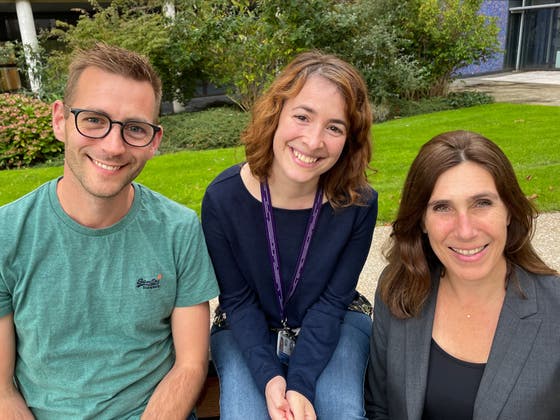Oct 14: The CD200R receptor acts as a break ánd as a throttle in autoimmune disease

Translational research by UMC Utrecht has shown that the signaling pathway of the immune inhibitory receptor CD200R can be reversed by a specific type of inflammation that is mediated by interferon-α (IFN-α). As a consequence, CD200R can no longer inhibit an important immune activating signal and sometimes even amplifies that signal. In an experiment using cells from patients with the autoimmune disease systemic lupus erythematosus (SLE), which is typified by the increased presence of IFN-α, the immune response of approximately 50 percent of patients was enhanced by CD200R. In summary, CD200R can act as a break ánd as a throttle for the immune system, depending on the presence of IFN-α.
The exact pathogenesis of autoimmune diseases such as systemic lupus erythematosus (SLE) remains largely unknown. Therefore, Dutch researchers at the Center for Translational Immunology at UMC Utrecht started to unravel one of the mechanisms that are associated with SLE, focusing on the immune inhibitory receptor CD200R. The findings have been published this week in Science Signaling.
Reversing the signaling pathway
In healthy people, the receptor CD200R inhibits the immune response, to prevent unwanted inflammation. In this study, a group of investigators lead by prof. Linde Meyaard PhD have found that the inflammatory cytokine interferon-α (IFN-α) can reverse the CD200R signaling pathway. As a result, instead of inhibiting, CD200R can amplify the immune response. IFN-α causes one of the nodes in the signaling pathway (named p120-RasGAP) to be cut into pieces. When p120-RasGAP is broken, CD200R can no longer inhibit an important immune potentiating signal and CD200R sometimes even can amplify that signal. In an experiment using white blood cells from SLE patients (a disease that is typified by the presence of IFN-α and increased cleavage of p120-RasGAP), the immune response in approximately 50 percent of patients was enhanced by CD200R.
Chronicity of autoimmunity
Co-first author of the paper, immunologist Michiel van der Vlist PhD, concludes: “The signaling pathway of CD200R can be reversed by IFN-α mediated inflammation. In that case, CD200R can no longer inhibit an important immune activating signal and it sometimes may even potentiate that signal. In other words, this receptor can act as a break ánd as a throttle for the immune system. We think that in general such properties may help the immune system to quickly adapt to changing inflammatory environments.” Co-first author Ines Ramos PhD adds: “ IFN-α is known to be increased in patients with SLE. This mechanism might perpetuate the pathogenesis of SLE. Our finding opens new possibilities for the development of targeted therapeutics against autoimmune diseases.”
According to the authors, this study can also impact development of CD200R-targeting therapeutics to treat cancer and explain why studies on the role of CD200R in tumors often lead to controversial results.
CD200 receptor (CD200R)
The cell surface transmembrane glycoprotein CD200 receptor is a protein that in humans is encoded by the CD200R gene. The CD200R is expressed on the surface of myeloid cells and CD4+ T cells. It interacts with CD200 transmembrane glycoprotein that can be expressed on a variety of cells including neurons, epithelial cells, endothelial cells, fibroblasts, and lymphoid cells. CD200R activation regulates the expression of pro-inflammatory molecules such as tumor necrosis factor (TNF) and interferons.
Systemic lupus erythematosus
Systemic lupus erythematosus (SLE) is an autoimmune disease. In this disease, the immune system of the body mistakenly attacks healthy tissue. It can affect the skin, joints, kidneys, brain, and other organs. The cause of SLE is not clearly known. It may be linked to the factors including genetics, environment, hormones and/or certain medicines. SLE is more common in women than men by nearly 10 to 1 and it may occur at any age. However, it appears most often in young women between the ages of 15 and 44 years.
Publication
Vlist M van der, Pascoal Ramos MI, Hoogen LL van den, Hiddingh S, Timmerman LM, Hond TAP de, Kaan ED, Kroef M van der, Lebbink RJ, Peters FMA, Khoury-Hanold W, Fritsch-Stork R, Radstake TRDJ, Meyaard L. Signaling by the inhibitory receptor CD200R is rewired by type I interferon. Science Signaling 2021;14(704): eabb4324
